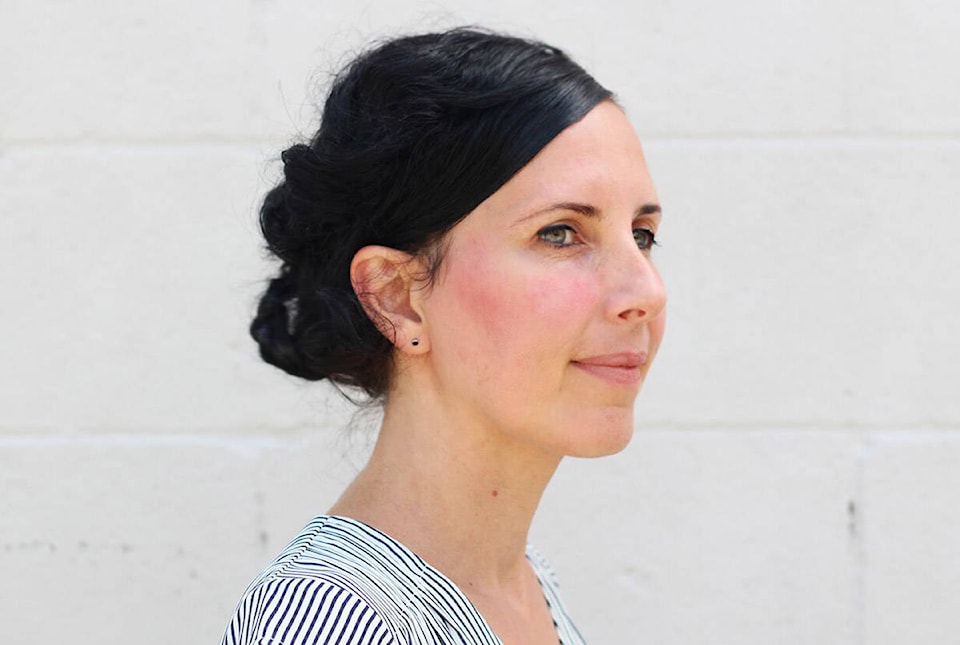Julie Flett, an award-winning Cree-Metis author from B.C., has been awarded one of the largest cash prizes available in the Canadian literary world for her childrenBดฮิชนูอ๘อ๘ึทs book Bดฮิชนูอ๘อ๘ึทBirdsongBดฮิชนูอ๘อ๘ึท.
The Vancouver-based author and illustrator has been awarded the $50,000 TD Canadian ChildrenBดฮิชนูอ๘อ๘ึทs Literature Award for 2020.
Birdsong tells the story of a young girl who moves to a small town and feels out of place until she meets an elderly woman living next door. While her new friend shares her love of arts and crafts, she needs to endure the changing of the seasons as well as the failing health of her new friend.
In a recent interview with Black Press Media, Flett shared her vision for the award-winning book, as well as how she incorporates her Indigenous heritage into her work.
Black Press Media has edited the responses for clarity and length.
What inspired you to write Birdsong?
For me, Birdsong was inspired by the people in my life. I used to take long walks in the neighborhood that I lived in and I stopped at this one house that almost looked like a cabin. It had big trees and an ungroomed, yet beautiful yard. In the spring, the yard was covered in snow drops. One day a woman came out to the front balcony, and I said to her that I loved the snowdrops. She replied saying, Bดฮิชนูอ๘อ๘ึทI know.Bดฮิชนูอ๘อ๘ึท
Over a few weeks, we slowly got to know each other and I learned that she was a ceramics artist. A year before I moved from that neighborhood, she dropped a little bag of snowdrop bulbs on my doorstep. No note, just the snowdrops. I kept them for a while in my studio before planting them.
That story kept coming up for me. I knew that I wanted to share a story for children about the connections we have with the people in our communities.
What was the motive to include Cree words within your storytelling?
Birdsong started off as a wordless picture book and the two characters, Agnes and Katherena came to mind so strongly. It was almost like I made the music and then the lyrics just came. It wasnBดฮิชนูอ๘อ๘ึทt a sort of afterthought, the conversation between them just started to come to me organically.
I remember an older woman telling me about waxing and waning moons when I was much younger. IBดฮิชนูอ๘อ๘ึทm learning Cree myself, my grandparents were speakers but they werenBดฮิชนูอ๘อ๘ึทt able to pass on the language. I was learning about the moons and the seasons, and I thought it was a beautiful exchange, the conversation between my two characters just came to be.
What components do you think make a good story?
Richard Vancamp, who is an extraordinary author, said to me recently that I should just stay true to myself and my stories.
When writing childrenBดฮิชนูอ๘อ๘ึทs books, what is your main focus for the younger generation to take away from your words and art?
I want children to feel and see themselves in all the unique ways they do. IBดฮิชนูอ๘อ๘ึทm always surprised by what kids take away from the stories that I work on because itBดฮิชนูอ๘อ๘ึทs often something I wouldnBดฮิชนูอ๘อ๘ึทt have expected.
I remember a child asking me why the book was called Birdsong.
My answer was that when my son was little and was visiting a friend on Gabriola Island, he called me one night to tell me about some frogs he could hear. He held the phone out so that I could hear them, kind of like a bird song, but a frog song. All these sounds that kind of locate us and make us feel at home. I found that the two characters in Birdsong lived close enough to one another, that I knew theyBดฮิชนูอ๘อ๘ึทd be able to hear that bird song around the same time and that they would think of each other.
What inspired you to write childrenBดฮิชนูอ๘อ๘ึทs books?
IBดฮิชนูอ๘อ๘ึทve been drawing since I was a kid, I love drawing. I knew that I wanted to work in the field of art but when I graduated from Concordia University, I ended up taking some work in the Downtown East-side, as an advocate outreach worker, and program coordinator.
While I was working one of those positions, my sister wrote to me while she was working for Theytus books, one of the first publisherBดฮิชนูอ๘อ๘ึทs of Indigenous voices in Canada. She came across a manuscript called The Moccasins, by Earl Einerson and my sister provided the opportunity for me to be the illustrator for the book.
After the book was finished, I took it to the place where I was working. One of the parents was visiting her son in the program. She was an elder and she started flipping through the pages when she noticed that there was an image of four little boys sleeping in a room together. She said that she once had a bedroom set up that way too. It occurred to me in that moment that we donBดฮิชนูอ๘อ๘ึทt have books for our community members - I didnBดฮิชนูอ๘อ๘ึทt have books growing up that represented my community. That really hit home, I was reminded about this feeling of people seeing themselves in books, that inspired me too.
Like us on and follow us on .
Want to support local journalism? Make a donation



